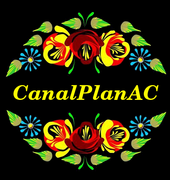Franz-Josef-Strauß-Brücke
Franz Josef Strauß Bridge
Franz-Josef-Strauß-Brücke, 94034 Passau, Germany

Franz-Josef-Strauß-Brücke
is a minor waterways place
on the Danube between
Deggendorf (60.96 kilometres
and 1 lock
to the northwest) and
Passau (0.60 kilometres
to the east).
The nearest place in the direction of Deggendorf is Kachlet Bridge (Ilz Valley Railway);
0.21 kilometres
away.
There may not be access to the towpath here.
Mooring here is unrated.
There is a bridge here which takes a dual carriageway over the canal.
| Marienbrücke Vilshofen | 21.10 km | |
| Donaubrücke Schalding | 4.56 km | |
| Schleuse Kachlet | 0.54 km | |
| Kachlet Power Station Bridge | 0.36 km | |
| Kachlet Bridge | 0.21 km | |
| Franz-Josef-Strauß-Brücke | ||
| Passau | 0.60 km | |
| Schanzlbrücke | 3.49 km | |
| Luitpold Bridge | 4.83 km | |
| Kräutlstein Bridge | 7.54 km | |
| Jochenstein Power Station Bridge | 29.60 km | |
- VisuRiS — associated with Waterways of Mainland Europe
- The official inland waterway resource for Belgium with actual traffic and planned operations on the waterways. Also has voyage planning and notices to mariners
Mouseover for more information or show routes to facility
No information
CanalPlan has no information on any of the following facilities within range:water point
rubbish disposal
chemical toilet disposal
place to turn
self-operated pump-out
boatyard pump-out
There is no page on Wikipedia called “Franz-Josef-Strauß-Brücke”
Wikipedia pages that might relate to Franz-Josef-Strauß-Brücke
[Richard Strauss]
denazification tribunal in Munich. Strauss was born on 11 June 1864 in Munich, the son of Josephine (née Pschorr) and Franz Strauss, who was the principal horn
[Franz Kafka]
10 October 2021. Retrieved 10 October 2021. Herbort, Heinz Josef (11 September 1992). "Franz Kafkas Roman "Das Schloß" als Musiktheater: Aribert Reimanns
[Josef Albers]
Josef Albers (/ˈælbərz, ˈɑːl-/; German: [ˈalbɐs]; March 19, 1888 – March 25, 1976) was a German-born artist and educator. The first living artist to be
[Arnold Schoenberg]
most popular pieces. Both Richard Strauss and Gustav Mahler recognized Schoenberg's significance as a composer; Strauss when he encountered Schoenberg's
[Expressionism]
Der Blaue Reiter and Die Brücke. Der Blaue Reiter (The Blue Rider, named for a painting) was based in Munich and Die Brücke was originally based in Dresden
[Wöhrder Wiese station]
Wöhrder Wiese Nuremberg U-Bahn station General information Location Franz-Josef-Strauß-Brücke 90489 Nürnberg, Germany Coordinates 49°27′08″N 11°05′13″E / 49
[Rainer Maria Rilke]
René Karl Wilhelm Johann Josef Maria Rilke (4 December 1875 – 29 December 1926), better known as Rainer Maria Rilke (German: [ˈʁaɪnɐ maˈʁiːa ˈʁɪlkə])
[Classical Hollywood cinema]
Constructivism Cubism Dada Degenerate art De Stijl Der Blaue Reiter Die Brücke Ecomodernism Experimental film Expressionism Expressionist music Fauvism
[Don Juan (Strauss)]
in E major for large orchestra written by the German composer Richard Strauss in 1888. The work is based on Don Juans Ende, a play derived from an unfinished
[Richard Neutra]
designed incinerator. This was a much-embellished account of an actual client, Josef von Sternberg, who indeed had a moated house but not an electrified one
